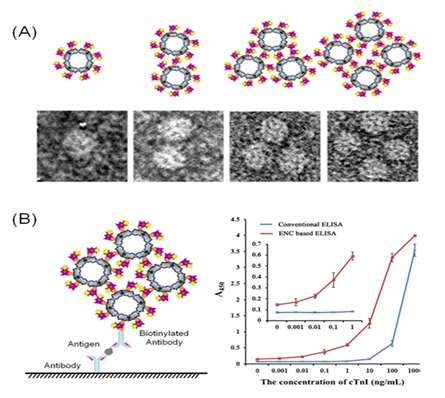New progress on self-assembly of ferritin nanoparticles
Date:11-03-2016 | 【Print】 【close】
The self-assembly of nanoparticles into larger superstructures is a powerful strategy to develop novel functional nanomaterials, as these superstructures display collective properties that are different to those displayed by individual nanoparticles or bulk samples. However, there are increasing bottlenecks in terms of size control and multifunctionalization of nanoparticle assemblies.
Recently, under the collaboration with scientists from Institute of Biophysics, CAS, Henan University, Huazhong Agriculture University and Kaifeng Central Hospital, some research fellows under the Center for Molecular Microbiology and Nanobiology in WIV, developed a self-assembly strategy for construction of multifunctional nanoparticle assemblies of tunable size, through rational regulation of the number of self-assembling interaction sites on each nanoparticle. As proof-of-principle, a size-controlled enzyme nanocomposite (ENC) was constructed by self-assembly of streptavidin-labeled horseradish peroxidase (SA-HRP) and autobiotinylated ferritin nanoparticles (bFNP). Their ENC integrates a large number of enzyme molecules, together with a streptavidin-coated surface, allowing for a drastic increase in enzymatic signal when the SA is bound to a biotinylated target molecule.
As result, a 10 000-fold increase in sensitivity over conventional enzyme-linked immunosorbent assays (ELISA) methods was achieved in a cardiac troponin immunoassay. Their method should provide a feasible approach for constructing elaborate multifunctional superstructures of tunable size useful for a broad range of biomedical applications.
